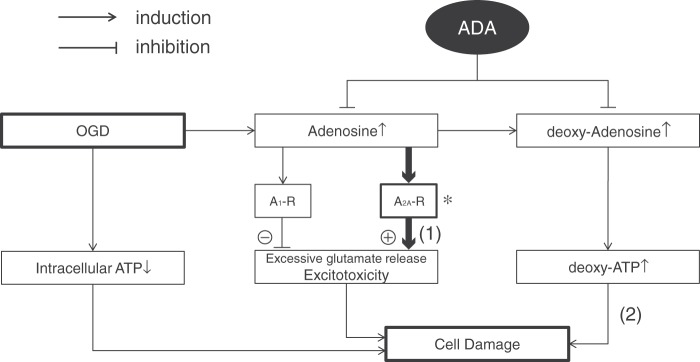Figure 7.
Possible ADA neuroprotection mechanisms. OGD and ischemia induce intracellular ATP loss resulting in cell damage. In addition to this damage process, excessive glutamate release potentiates cell damage. Although adenosine inhibits the excessive glutamate release via A1-R activation and reduces the additional excitotoxicity, adenosine has a harmful effect by enhancing the glutamate release via A2A-R activation. ADA considerably reduces the A2A-R based excitotoxicity (1). In the striatum, expression of A2A-R is much higher than compared with other regions (see review, Cortes et al. 20152)(*). In addition, deoxy-adenosine and deoxy-ATP are also known causes of apoptosis. ADA could inhibit this cell damaging process (2).

